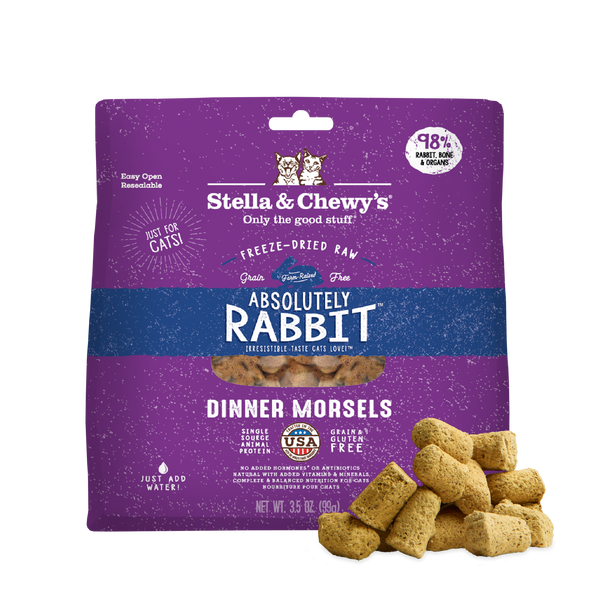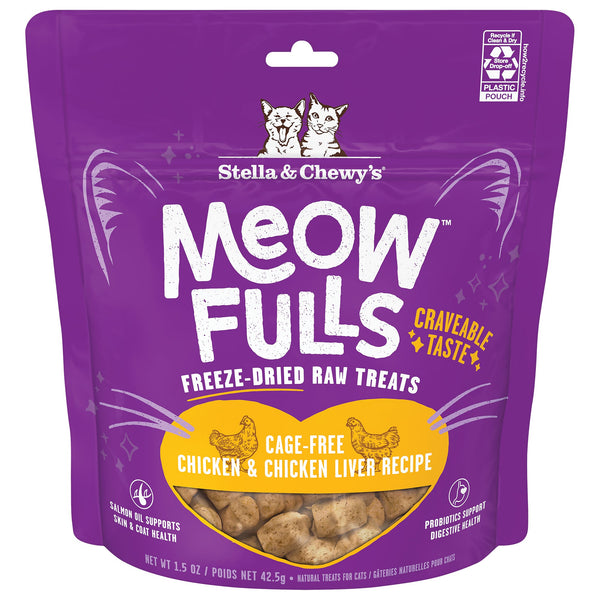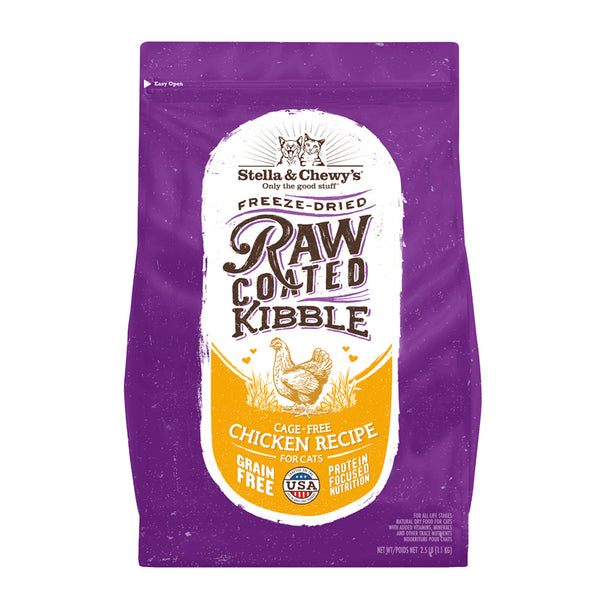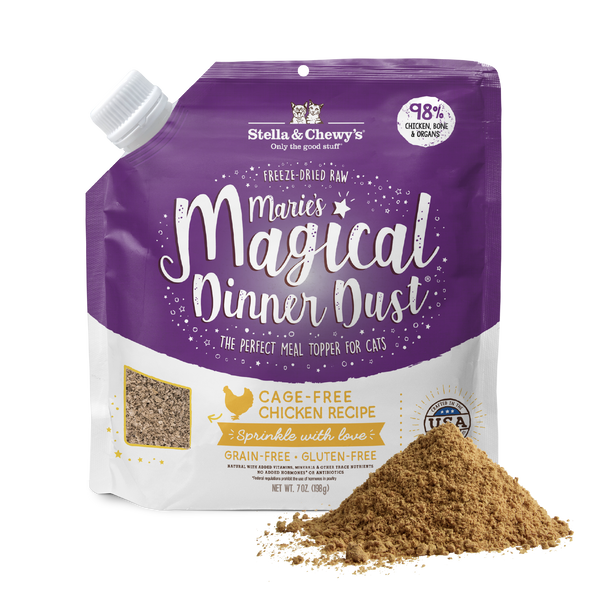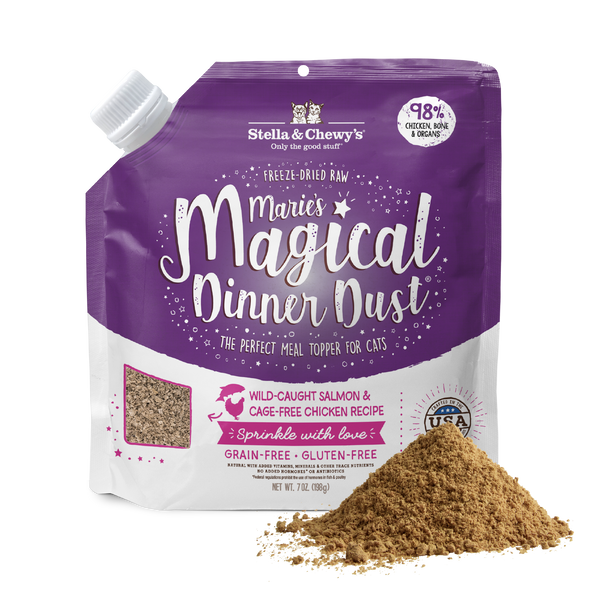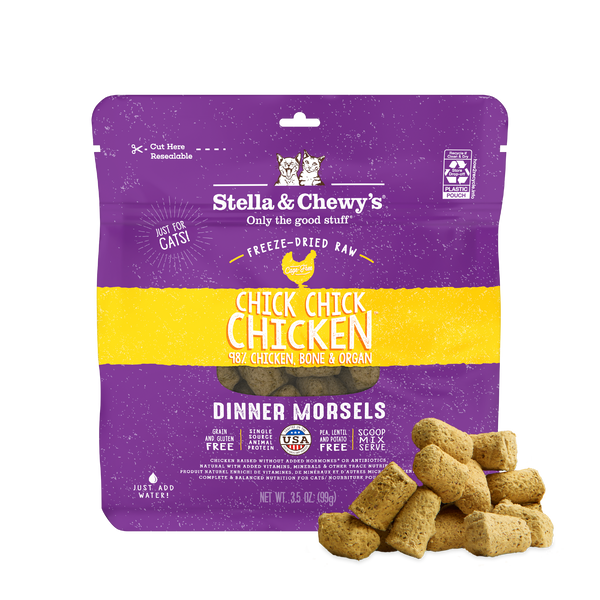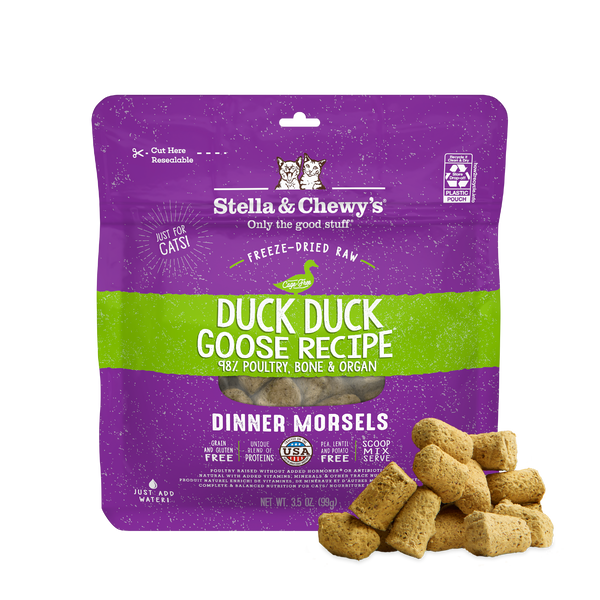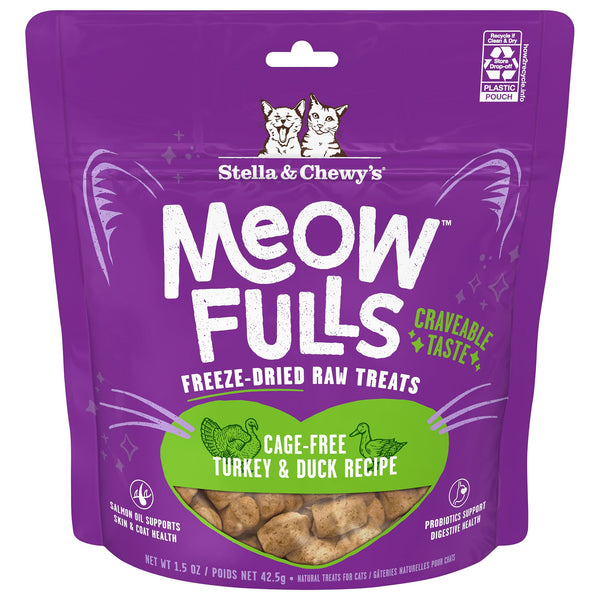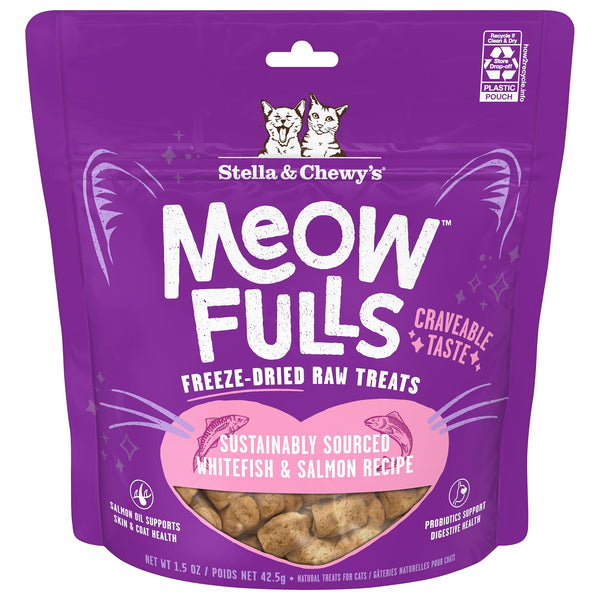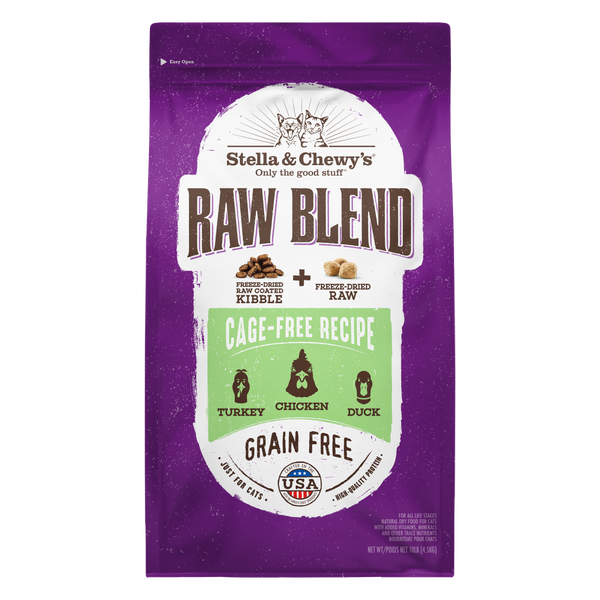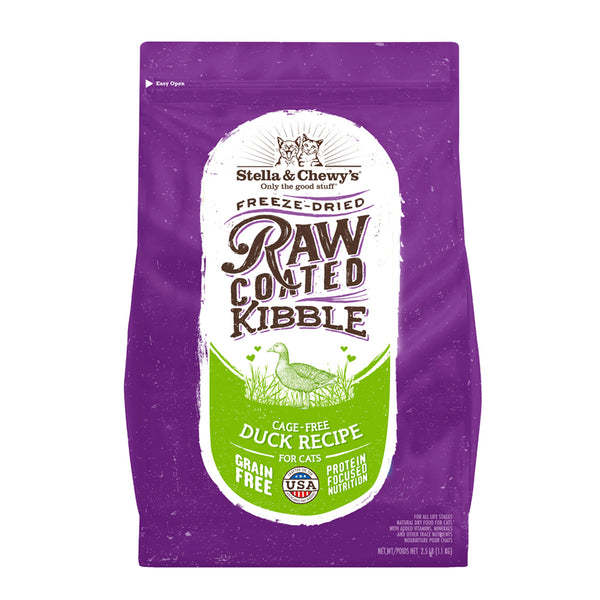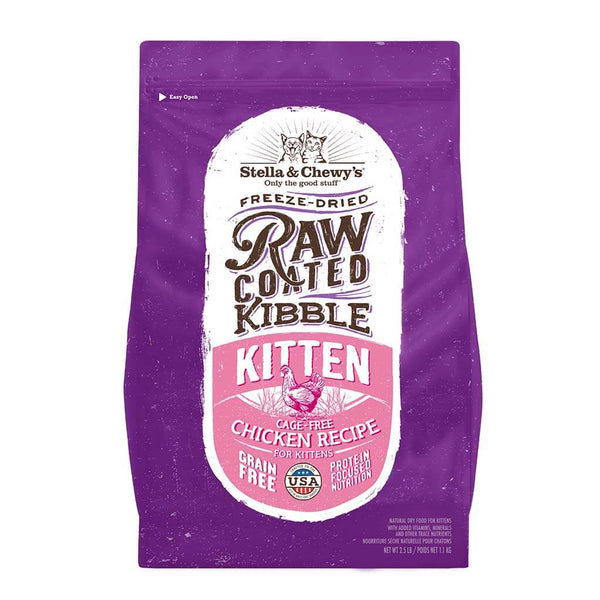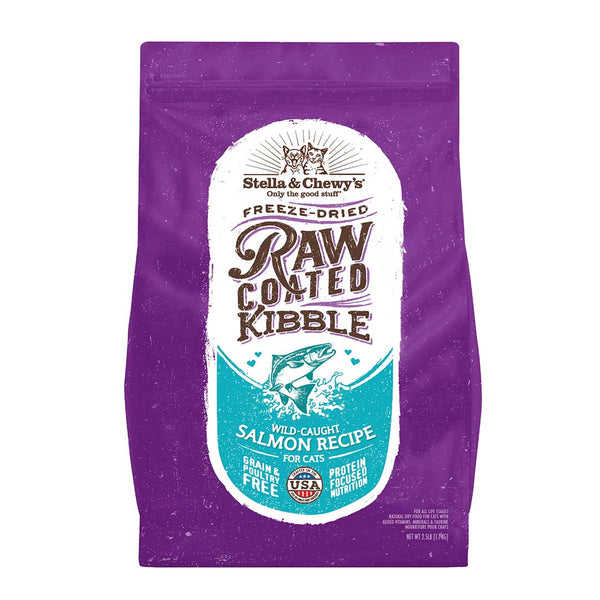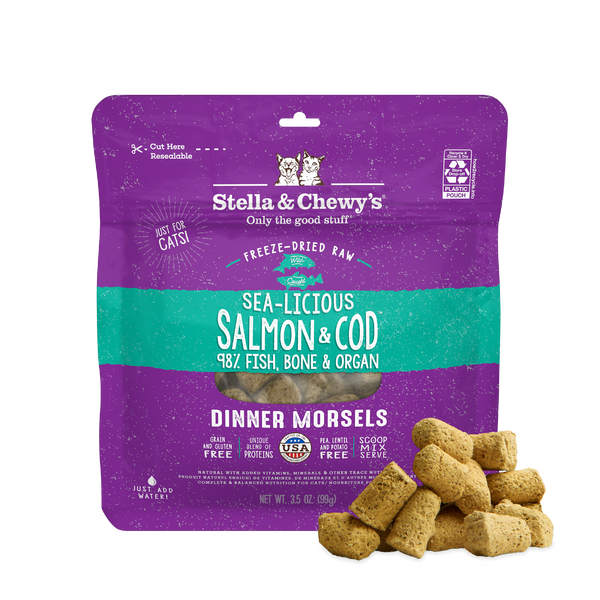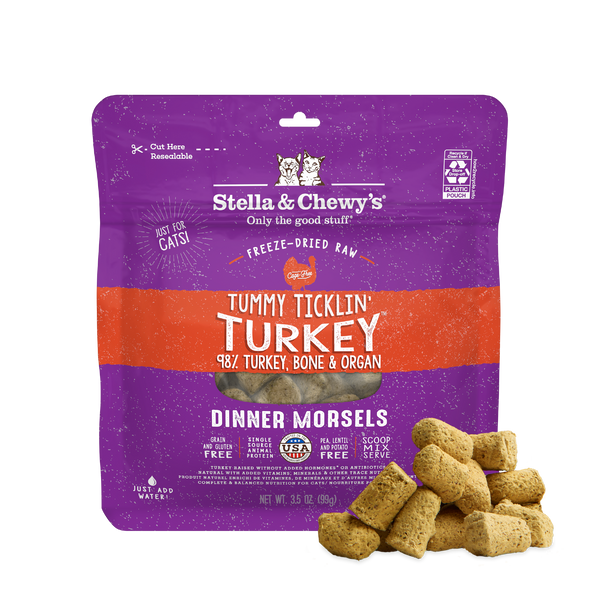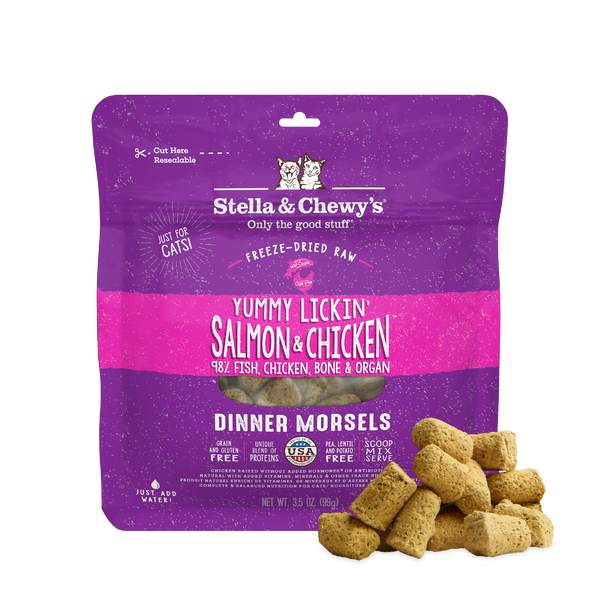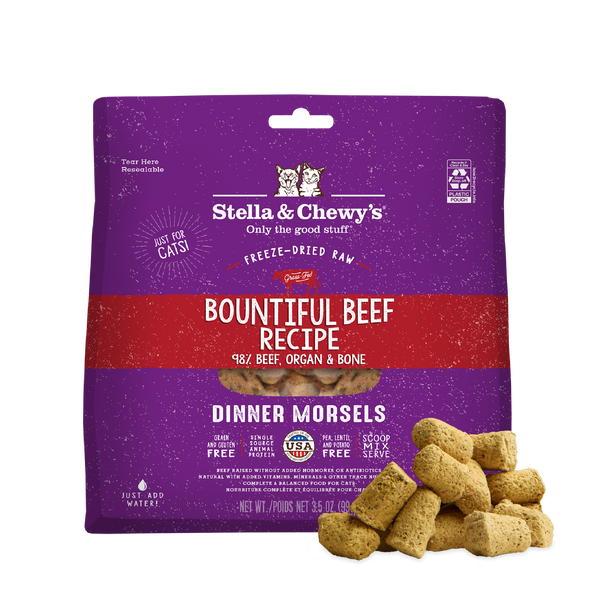Have you ever considered introducing a raw food diet to your cat? A raw diet offers many benefits that support your cat's overall health, and provides the meat your cat naturally craves. Keep reading to learn more about raw food for cats and the nutritional advantages of a BARF (biologically appropriate raw food) diet for your cat.
What IS a Raw Food Diet for Cats?
For cats, a raw diet consists of uncooked, unprocessed ingredients including raw meat, organs and bone. Stella & Chewy’s raw cat food recipes are formulated to mirror your cat’s ancestral diet and contain 98% raw muscle meat, organ meat, and ground bone. A raw cat food diet is packed with protein and nutrients that support healthy teeth and gums, optimal digestion, vibrant skin and coat, and stamina. Our raw cat foods also have a high moisture content to help keep your cat hydrated.

Is a Raw Food Diet Safe?
If you take it upon yourself to prepare raw ingredients for your cat's diet there are safety risks such as foodborne pathogens (Salmonella and other bacteria). Making your own raw cat food also runs the risk of nutrient deficiency, unless you work closely with an animal nutritionist.
Commercially prepared raw cat food is safe and offers complete and balanced nutrition. All Stella & Chewy's products are formulated by an animal nutritionist and reviewed by a veterinarian to ensure they meet AAFCO guidelines. Food safety is our top priority at every step, from sourcing quality animal proteins to the sustainable packaging that keeps our raw pet foods fresh and safe.Learn more about Stella & Chewy's commitment to pet food safety.
Is a Raw Food Diet Right for MY Cat?
If your cat has a known health condition, you should check with your vet before making any change to their diet.
If your cat is a picky eater, transitioning to a raw cat food diet might take more time and patience. However, many cats make the change to a raw diet easily. Stella & Chewy’s freeze-dried and frozen raw cat foods offer complete and balanced nutrition for all life stages, meaning that felines of every age thrive on real, raw nutrition!

The Benefits of a Raw Food Diet for Cats
As predators and obligate carnivores, cats have evolved eating raw prey in the wild. Feeding your cat a biologically appropriate diet that consists of real, raw meat can have several benefits:
1. Raw Food Diets are Purrfect for Picky Eaters
Boredom with eating the same thing every day can lead to picky eating habits. Switching up the types of foods and recipes you feed your cat can help keep mealtime new and exciting, and this has never been easier than with the wholesome variety of recipes offered by Stella & Chewy's Freeze-Dried Raw Dinner Morsels. Plus, freeze-dried raw has a more concentrated flavor and aroma, so it is more palatable for many cats than other kinds of food, and can be hydrated to the exact consistency that your finnicky feline likes best!
2. Raw Food Diets Promote Healthy Digestion
A high-protein, grain-free raw diet digests more gently and efficiently and can be helpful for cats with sensitive stomachs. Stella & Chewy’s recipes also include added probiotics to promote optimal digestion.
3. Cleaning the Litter Box Might Get Easier
Cats that eat a raw food diet tend to have smaller, less stinky stool. Once your cat is fully on a raw diet, you may even notice that their stools are less frequent as their body is utilizing so much of the raw cat food, therefore eliminating less waste and by-products.
4. Raw Food Diets Help Cats Lose Weight
Cats may overeat (including foraging scraps and begging for extra food) if their current diet doesn't provide adequate nutrition. A biologically appropriate raw food diet is more satisfying and provides more energy, which can help overweight cats achieve and maintain a healthy weight.
5. Raw Food Diets Help with Allergies
Allergies can cause a variety of issues including tummy troubles, itching, dry and flaky coat, and more. A raw diet can be beneficial for cats with allergies as they contain quality ingredients and natural oils to support healthy skin and a shiny coat. Stella & Chewy’s also offers many single source protein recipes as well as novel protein options such as rabbit.
6. Raw Food Is Better for Feline Oral Health
According to veterinarian Dr. Angie Krause: "Excessive carbohydrates can increase tartar accumulation and periodontal disease." Stella & Chewy's raw cat food is made of 98% meat, organs, and bone, meaning that when your cat eats our raw food you won't have to worry about excess tartar buildup from carbs.
7. Raw Food Diets are Ideal for Senior Cats
Studies show that senior cats benefit from higher protein intake, which makes a raw meat diet and ideal choice for your senior kitty. Whether you choose freeze-dried or frozen raw, Stella & Chewy's raw diets are easy to eat even if your older kitty is missing teeth or has mouth problems. Raw cat food also contains high moisture content so you can feel confident that your cat is getting proper hydration from their meals, which is important for kidney function.
How to Transition Your Cat to a Raw Food Diet
As with any new food, you should always start with a slow transition over 7-10 days. Introducing a new food or new food type, like raw, too quickly can lead to stomach upset or diarrhea. Your cat may also need some time to get used to a new texture if they’re used to eating dry kibble. It's important to check feeding guidelines for your cat based on their age, breed, and activity level to accurately judge how much food they need.

Days 1-3: Mix 75% of the old food with 25% of the new raw food.
Days 4-6: Mix 50% of the old food with 50% of the new raw food.
Days 7-9: Mix 25% of the old food with 75% of the new raw food.
Day 10: Feed 100% of the new raw food.
If your cat experiences any digestive issues, you can extend the transition over a longer period of time. Every cat is unique, so the transition to a raw diet could go easily or take a bit longer. If your cat won't eat 100% raw food, we also offer raw-coated kibble and raw blend kibble with pieces of freeze-dried raw food mixed in, or you can add a boost of raw flavor and nutrition to your cat's every meal with our fan-favorite freeze-dried raw meal topper: Marie's Magical Dinner Dust!



